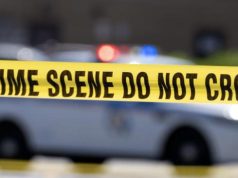
By Steve Flowers
During the summer the U.S. Supreme Court rendered two significant rulings. They were quite different philosophically.
The high tribunal, in a far-reaching landmark decision, rendered same sex marriage legal in America. By granting all legal rights to same sex marriage they gave credence and official sanction to these unions. Their decisions are the law of the land. This is a significant verdict. The Supreme Court is omnipotent. Therefore, when it comes to federal benefits, such as Social Security, state laws like Alabama’s that prohibit same sex marriage are irrelevant. If a gay couple that was married in Connecticut moves to Alabama they are officially married.
In a contrasting decision on an appeal of a case that originated in Shelby County, the U.S. Supreme Court handed down a ruling that voided a portion of the 1965 Voting Rights Act. The decision allows Alabama and 14 other states to avoid the preclearance requirement, which previously required these states to seek approval from the Department of Justice for any changes made in election laws and voting districts.
The high court’s invalidation of Section 4 of the Voting Rights Act is not as significant a ruling as the legalization of same sex marriage. However, there was a tremendous hue and cry from civil rights groups and leaders. The decision did not strike down the Voting Rights Act of 1965. It merely offered relief from mundane and non-challenging voting procedures in the south. For example, if an all white county wanted to change a voting location from a church to a school, the county had to ask the U.S. Justice Department for permission. It has been cumbersome and expensive. The U.S. Supreme Court agreed.
In practice, 95 percent of all minor voting changes were approved in a perfunctory manner anyway and it just cost the local government and U.S. government a lot of money. The discrimination provisions of the Voting Rights Act still exist. The Justice Department can still step in and sue. They are doing just that in Texas over the redistricting of their legislative lines. Only the preclearance provision was stricken.
These two contrasting opinions illuminate an interesting alignment of our U.S. Supreme Court. The Court is evenly divided philosophically. You have four hardcore liberal members and four true blue, steadfast, dedicated conservatives on the tribunal. These eight members are dedicated, committed and predictable votes when it comes to left or right wing issues.
Justices Ruth Bader Ginsburg, Stephen Breyer, Sonia Sotomayor and Elena Kagan are very liberal. As might be expected, a Democratic president appointed them. Obama appointed Sotomayor and Kagan and Clinton appointed Breyer and Ginsburg.
In contrast, Justices John Roberts, Antonin Scalia, Clarence Thomas and Samuel Alito are reliably and unalterably conservative. Republican presidents appointed all four of these men. George W. Bush appointed Roberts, Thomas and Alito and Reagan appointed Scalia.
The ultimate swing vote on the Supreme Court is also a Reagan appointment. Justice Anthony M. Kennedy is the decision maker on the Court. He was the deciding vote on both of the aforementioned decisions. The verdicts came down on a 5 to 4 vote with Kennedy being the decisive swing vote.
This philosophical stalemate has made the moderate and unpredictable Justice Kennedy the most powerful man in America after the President. Kennedy is a 77-year-old lifetime Californian. He was born and raised and practiced law in San Francisco. He graduated from Stanford undergrad and Harvard Law School. He is a legal scholar who taught constitutional law. He served as a U.S. Federal Judge on the U.S. Court of Appeals for 12 years before Ronald Reagan appointed him to the Supreme Court in 1988.
By the way, six of the nine justices went to law school at Harvard. It almost appears that a Harvard law degree is a prerequisite for a seat on the High Court. Yale can claim two.
The preclearance decision cleared the way for Alabama’s new photo voter identification law to take effect for next year’s state elections. The Secretary of State’s office has devised a plan that will allow for any voters who do not have identification to receive free photo IDs through the Department of Public Safety or local Boards of Registrars.
See you next week.
Steve Flowers is Alabama’s leading political columnist. His column appears weekly in more than 70 Alabama newspapers. Steve served 16 years in the state legislature. He may be reached at www.steveflowers.us.



